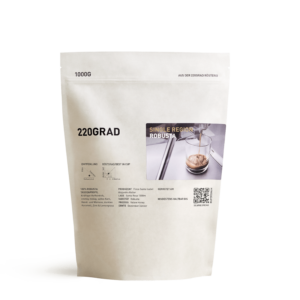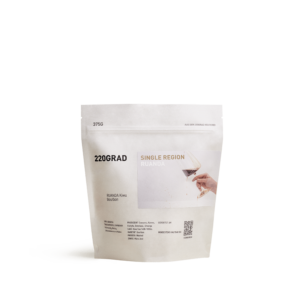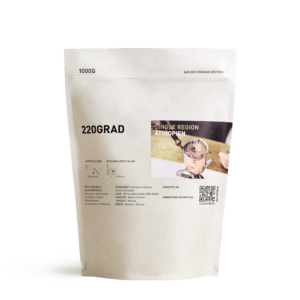Gedeb: 1950-2100 m above the sea level
Ethiopia is one of the most popular countries for producing specialty coffee. Therefore, when it comes to beans for filter preparations, we continue to focus on this country and especially on the region of Yirgacheffe. The origin and genetic diversity of coffee lies there and is reflected in the cup. The beans come from the Chelbesa washing station. The washing station receives and processes the coffee crop from around 615 small farms (0.5-2 ha) in the region. The Arabica varieties Kurume and Wolisho are mainly used.
After a long time we decided on a “natural” again. So-called “naturals” are coffee beans that are dried in the coffee cherry. In contrast to this is the “washed” post-harvest method. The cherry and the two coffee beans inside have a moisture content of up to 65% after harvest. The beans must be dried to a level of 10-12% for storage. The post-harvest process is an essential step in the production of coffee. The motivation and know-how of the growers and agricultural engineers is essential to guarantee a good raw material base for the coffee roasting processes.
„I don’t believe in crazy experimental coffees. The post-harvest process can maintain the quality but not create it. For me, working on quality starts at the plantation”.
This quote comes from Teo Englhardt from Guatemala. The high art of the “post-harvest process” is to bring the quality of the coffee beans from the field into a dry, storable form.
At the “natural” or “dry” process, the coffee cherries are washed after harvest, freed from foreign bodies and sorted again according to their degree of ripeness. The cherries are then placed on so-called “African beds” to dry. The advantage of these beds over concrete surfaces is that the cherries are also ventilated from below. The cherries are turned over and over again to achieve even drying. The big challenge is to get the drying rate over time right. If the cherries remain moist for too long, there is a risk of rotting processes, which have a negative impact on the quality of the cup. However, there is also the risk of drying too quickly. The Brazilian scientist Flavio Borém describes the damage caused by drying too quickly as the cell structure of the coffee beans is destroyed and death processes are initiated in the bean. In addition to sun drying, the large quantities of coffee cherries in Brazil are also dried using drum dryers. For these processes, Flavio Borém issued the following formula for drying coffee, based on his observations: 13g H2O per kg of coffee per hour at a temperature between 35 and 40° C. This drying rate best preserves the cell integrity of the coffee beans. The formula sounds simple, but in practice with sun drying it requires a great deal of knowledge of the local conditions. Drying takes between two and three weeks. The beans with the dried pulp are then put into the mill. Here the pulp and the parchment are removed and the beans are sorted according to density and size. Defective beans are sorted out again. The green beans remain in a warehouse with a defined temperature and humidity for a while. Here the beans “rest” for a while so that they are in balance for transport. We should always keep in mind that the process of life is still going on in green coffee beans. Therefore, the storage and age of green coffee has a major influence on the quality in the cup. Many hands and minds have to be put to work before the refinement through the roasting process, and we should appreciate that with every good cup.
This year we will offer two Ethiopian Arabica varieties “Yirgacheffe” in our range for filter preparations. In addition to this “natural” we will also offer a “washed coffee” from the region. We will be running a PRESS series on these two coffees and two “post-harvest processes” in which we will delve into the background of these processes.




